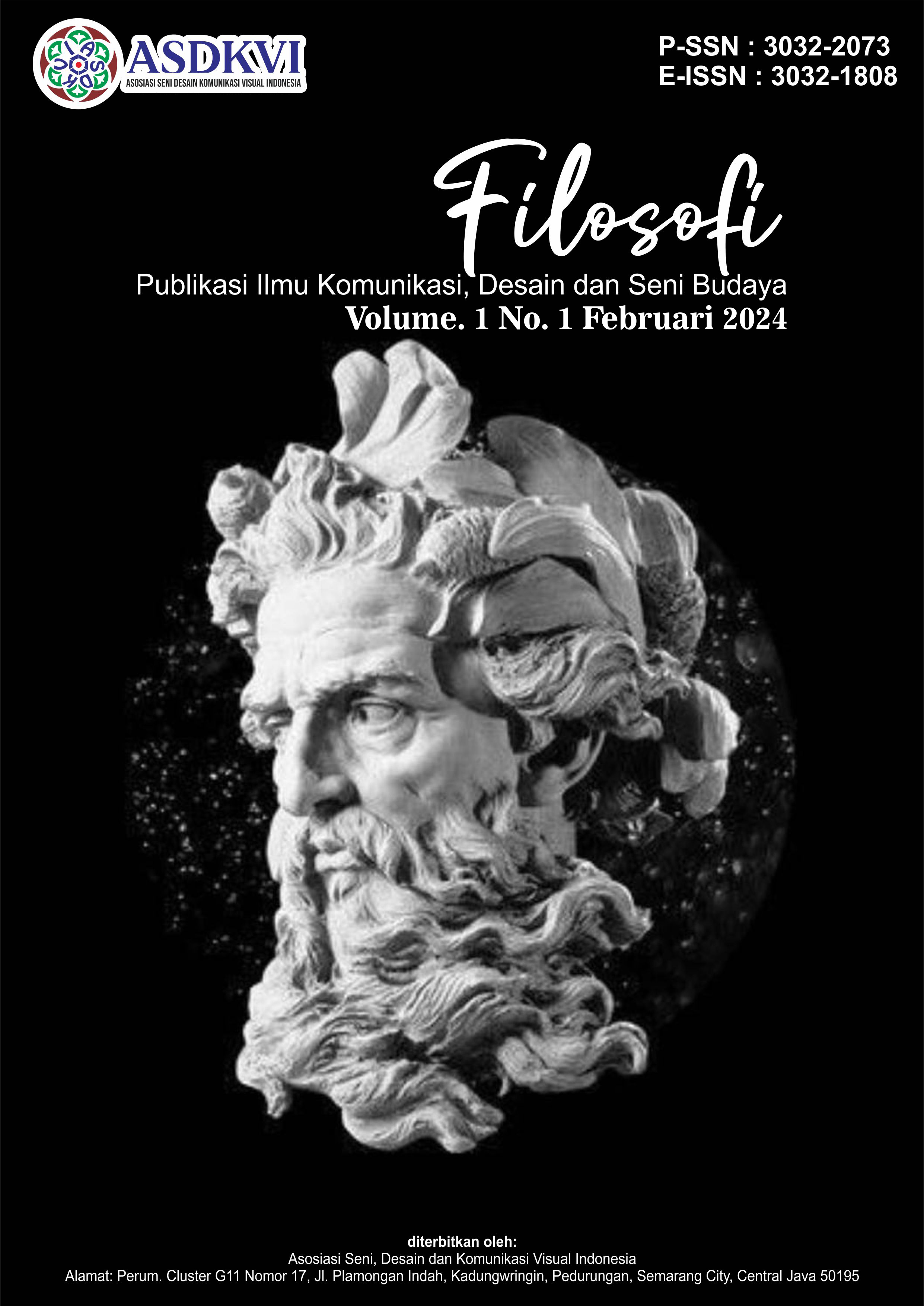Persepsi Siswa Terhadap Kurikulum Merdeka Dalam Pembelajaran Seni Tari Di Kelas VIII SMPN 2 Padang
DOI:
https://doi.org/10.62383/filosofi.v1i1.86Keywords:
perception, independent curriculum, danceAbstract
This study aims to determine the perception of grade 8 students of SMPN 2 Padang towards the independent curriculum of dance and what are the obstacles that exist during the learning process This type of research is qualitative and quantitative research. The population of this study was all grade VIII students of SMP Negeri 2 Padang as many as 244 students with a sample of 61 people. Data was collected through interviews, questionnaires and documentation. The steps of analyzing data are data reduction, data presentation and conclusions. The score from the questionnaire result data is calculated by percentage statistics. The results showed that students' perceptions of the independent curriculum for dance learning in grade VIII SMPN 2 Padang were good, because students gave a positive response to the independent curriculum for dance learning which can be seen from the acceptance and evaluation indicators. On the indicators of reception consist of motivation, attention and impression. Students are motivated and very enthusiastic about learning dance using an independent curriculum, because they can work in groups that will foster an attitude of solidarity. Student attention to learning dance using an independent curriculum is very high, because students really want to know more about art learning through the internet. Students are very impressed and agree to learning dance using this independent curriculum, because students can explore their potential and be more confident. In the evaluation indicators, most students answered that they felt completely unburdened by the existence of an independent curriculum in dance learning.
References
Astuti, F. (2021). Pengenalan Pendidikan Seni Tari Pada Anak Taman Kanak-Kanak Introduction to Dance Education for Children Kindergarten. 10, 9–15.
Astuti, F., & Padang, U. N. (n.d.). Makna Simbolis Sumbang Duo Baleh dalam Seni Pertunjukan Wanita Minangkabau.
Lao, H. A. E., & Hendrik, Y. Y. C. (2020). Jurnal Dedikasi Pendidikan Universitas Abulyatama Implementasi Kebijakan Kemerdekaan Belajar dalam Proses Pembelajaran Di Kampus IAKN Kupang-NTT. 8848(2), 201–209.
Moleong, Lexy J. (2010). Metodologi Penelitian Kualitatif. Bandung: PT Remaja. Rosdakarya.
Moleong, Lexy J. (2014). Metode Penelitian Kualitatif Edisi Revisi. Jakarta: Remaja. Rosda Karya
Pendidikan, T. J., No, V., Kantor, M., Kementerian, W., & Provinsi, A. (2023). Mengembangkan kreativitas dan karakter bangsa melalui Kurikulum Merdeka di Madrasah Developing creativity and national character through the Kurikulum Merdeka in Madrasah. 02(1), 1–12. https://doi.org/10.56113/takuana.v2i1.68
Prasilika, Tiara. 2007. Studi Persepsi Resiko Keselamatan Berkendara Serta Hubungan Dengan Locus Of Control Pada Mahasiswa FKM UI Yang Mengendarai Motor 2007. Skripsi. Program Sarjana Fakultas Kesehatan Masyarakat Universitas Indonesia. Depok
Risdianto, Eko. (2019). Analisis Pendidikan Indonesia di Era Revolusi Industri 4.0. Bengkulu: Universitas Bengkulu.
Sarwono, (1983). Teori-Teori Psikologi Sosial. Jakarta : CV. Rajawali.
Shinta, E. F., Yuliasma, Y., & Susmiarti, S. (2015). Peningkatan Hasil Belajar Siswa dengan Menggunakan Model Pembelajaran Kooperatif Tipe Think, Pair, Share (TPS) dalam Pembelajaran Seni Tari Kelas VII 3 Di SMP Negeri 31 Padang. Jurnal Sendratasik, 4(2), 41-46.
Slameto. (1988). Belajar dan Faktor-Faktor yang Mempengaruhinya. Jakarta: PT. Rineka Cipta
Sudjana, Nana. (2013). Dasar-Dasar Proses Belajar Mengajar. Bandung: Sinar Baru.
Sugiyono. (2012). Metode Penelitian Kuantitatif Kualitatif dan R&D. Bandung: Penerbit Alfabeta.
Downloads
Published
How to Cite
Issue
Section
License
Copyright (c) 2023 Filosofi : Publikasi Ilmu Komunikasi, Desain, Seni Budaya

This work is licensed under a Creative Commons Attribution-ShareAlike 4.0 International License.





